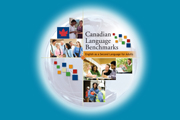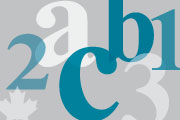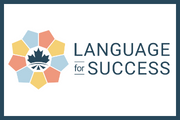
Problem Solving
Discover the language in Problem Solving
Problem Solving requires communicating with others in a way that conveys a willingness and ability to find solutions to challenges and unexpected situations. It involves listening, speaking, reading and writing, often in combination; for example:
- Listening carefully and posing questions to understand the challenges posed by a situation.
- Locating, interpreting and analyzing relevant information to identify reasons for a problem, its effects and possible solutions.
- Expressing or presenting possible solutions, including a rationale.
- Discussing options while conveying respect for others’ ideas, and recognition of one’s own biases.
- Understanding and following instructions related to problem-solving tasks.
- Interpreting feedback on a solution that has been implemented.
Explore work-related examples at each CLB stage
The Canadian Language Benchmarks (CLB) describe communicative ability in English as a Second Language (ESL). The CLB organize 12 benchmarks into three stages of ability: Stage I (Basic), Stage II (Intermediate) and Stage III (Advanced).
Learners may already possess Problem Solving skills but lack the English language to demonstrate them. For this reason, there is no direct correspondence between Problem Solving and CLB levels.
The examples below show the language involved in demonstrating Problem Solving.
![]()
Point out a hazard to a supervisor using gestures, words and simple phrases.
![]()
Listen to a supervisor describe what to do when a customer is upset; indicate understanding or non-understanding; ask for repetition or rephrasing as required.
![]()
Tell a co-worker that there is a problem with a routine work process; listen to their advice on how to solve it.
![]()
Tell a supervisor that the company’s cell phone policy presents a problem for your family; ask for permission to carry your cell phone.
![]()
Read simple step-by-step instructions accompanied by diagrams to troubleshoot a piece of equipment that has stopped working.
![]()
Write a brief note to a supervisor to inform them of a shortage of supplies.
![]()
Discuss the possible causes of a problem with co-workers; propose a solution.
![]()
Express strengths and limitations for two different solutions to a straightforward problem; suggest a compromise.
![]()
Read a customer email containing a complaint; respond by expressing empathy, summarizing the problem, identifying the cause and suggesting a possible solution.
![]()
Read an employee policy handbook to determine how to address a perceived policy breach; follow the steps and write a message to notify your supervisor.
![]()
Write an email to a supervisor to point out a dangerous working condition; explain the condition and possible consequences.
![]()
Lead a discussion to explore solutions to a complex workplace problem; pose questions to help others expand on, justify and clarify their ideas; summarize and link ideas to facilitate consensus.
![]()
Interact effectively with a key client to identify a complaint and negotiate a mutually beneficial outcome.
![]()
Express the main issue to be resolved in a complex problem; identify key aspects to consider, and possible causes.
![]()
Read a proposal to evaluate whether the objectives, timelines, work activities and possible challenges will address a given problem.
![]()
Read and understand employment standards to determine if an employee complaint is justified.
![]()
Write a detailed report to address a workplace problem; include an analysis of the problem, its causes, and possible solutions.









